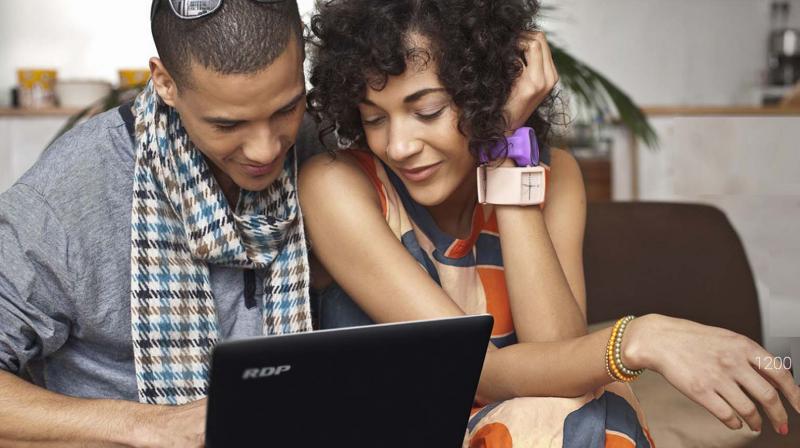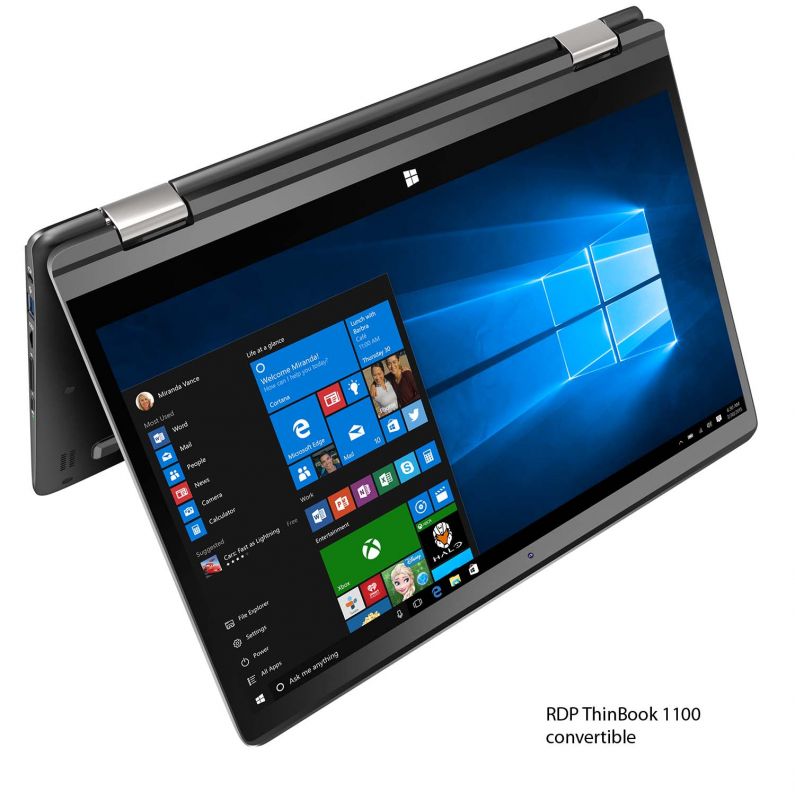Laptops don't die - they just get better!
Hyderabad-based RDP who made their name and fame with screen-less thin client PCs, now have a good range of what they call ThinBooks.

Sometimes, numbers don't tell the full story. Industry monitors regularly record the shrinking market for laptop computers in the face of tablets and larger smart phones. Yet, the full-function portable PC refuses to roll over and die.
Two industry trends have helped to keep laptops alive — for professional users: One, is BYOD or Bring Your Own Device: Corporates encourage their staff to work in office on their personal machines. The other, is Work From Home: another canny move by employers who are OK with employees connecting to the office network, but doing their work from home or hotel.
No wonder lakhs of professionals opt for a full function laptop or notebook PC to do this dual duty. If the device is thin-n-light, it’s so much the better. If it also offers a touch screen like a tablet or smart phone that also attracts many lay users who need to occasionally do a bit of word processing, accounting or imaging.
Hyderabad-based RDP who made their name and fame with screen-less thin client PCs, now have a good range of what they call ThinBooks: lightweight laptops that unlike tablets, offer a full featured Windows environment. To achieve the level of portability that young millennial customers demand, such devices jettison the DVD drive and on-board hard disk drive. The storage offered is minimal — around 32GB of solid state storage — and the RAM memory too, is bare bones: typically 2GB. On-the-move users demand a working day of usage, so the battery is 8000-10,000mAh, good for 8-10 hours.
RDP currently has three Thinbook models in the market and I have been trying them out for a week now. All are fueled by a quad core Intel Atom chip. The lightest (weight-wise and on purse!) is the Thinbook 1130, at 1.2kg. Its display is 11.6 inches across and like the other two models, comes with a resolution of 1366 by 768 pixels — not quite full HD. The common camera in the series is a 0.3MP front camera, just about adequate for a Skype-type Video call. Two USB ports (one of them USB 3), a mini HDMI port and a 0.3 mm earphone jack are standard in all three models. The 1130 is currently offered at Rs 9999 by online sites. For Rs 3,000 more, you can go for the 1430b which has a larger 14.1-inch screen and weighs 1.36kg. All other specs are identical to the 1130, including the preloaded Windows 10 Home operating system. If you prefer the Windows 10 Professional version, go for the 1430p at Rs 13,999.
The flagship of RDP's Thinbook range seems to be the 1100 which has the useful addition of a touch screen. We are so used to touch controls on the phone that our fingers itch to touch and swipe/move/ select stuff on the screen. For that reason alone I'm guessing a lot of users will be most comfortable with the 1100 — even though it only offers the Win Home OS and at 11.6 inches is smaller than the 1430 and is priced Rs 13,999. There is another feature that was a clincher for me. The 1100 has a 360-degree hinge — that means you can prop it up on the table in a "tent" mode or swing it all the way and use it like a tablet. You can't then access the keyboard, but who needs it with a touch screen!
Somewhere among the three options, most users will find their sweet spot. But while great as highly portable computers, these thin books assume you are 'always on' the Internet and store most of your work in one of the cloud services like Google Drive or OneDrive. There is no room on the machine for heavy tools like Office or Photoshop, though you could store some lite versions on a plug-in microSD card up to 128GB.
If you are OK with this caveat, you might well find that 'Thin is In' for you — notebook-wise.
—IndiaTechOnline


